Results 1 to 10 of 13
Threaded View
-
04-12-2014, 03:43 AM #1Junior Member

- Join Date
- Mar 2014
- Location
- Sydney, NSW, Australia
- Posts
- 27
Thanked: 0 Restoring Granddad's old straight with an ultramodern flourish
Restoring Granddad's old straight with an ultramodern flourish
Hi all,
After inheriting a bunch of my Grandfather's old straight razors, unfortunately (or fortunately , depending on your point of view), the best of them was a nice Blue Wonder that had a broken scale.
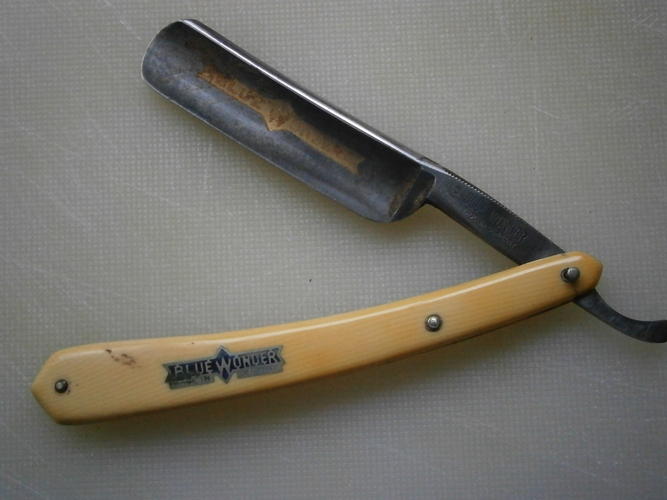
I've decided to give it some new scales made out of carbon fiber. I love the look of CF but am a bit put off by the price of a new razor made out of one... besides, I reckon I can pull this off.
This is the first time I've worked with CF and the first scales I've made, its an ongoing project that I'll need to complete over a few weeks at least, since with my job and the family, spare time to make a mess is limited. Any hints on how to proceed are welcome - I've looked at some youtube vids, but because of the CF toughness and the dust, I'm planning on taking a slightly different approach.
I have a well equipped workshop, so outlay for powertools is limited to a good beltsander that can be locked into a vise, which I've been meaning to get for ages anyway.
First of all, I've dug around and found safety gear of large safety glasses, a good dust mask (meets a high international standard for dust), disposable gloves, boots, earmuffs and disposable overalls.
Acquired a
1. A4 sheet of 3mm CF from ebay, I'm amazed at how strong and light this stuff is... cost was around A$60 delivered from China via ebay (heaps cheaper than buying locally). I'll only use a small amount.
2. A diamond saw for a Sonicrafter (an oscillating tool). Cost ~A$30
4. A nice new 1/8 inch drill for enlarging the hole in the razor. Not expensive.
3. Ordered a number of 1/8 inch diameter pivots and associated tiny screws with a torx head, a bit of white lining and blue G10 and a few teflon washers from knifemakerusa to make the wedge blue with some white trim - a nod to the "Blue Wonder" blade. About US$54. Could have saved a bit of money by buying a smaller piece of CF from knifemakerusa as well, but didnt spot it until too late.
------------------------
Locked the CF sheet into a vise and cut it with the diamond saw by sweeping it from one side of the sheet to the other - rather than working from one end to the other (unlike the little cut at the end suggests in the photo below). This stuff makes nasty fine dust that needs to be carefully swept up, vacuumed and removed afterwards. If I'd thought of it, I would have rigged up a vacuum cleaner to immediately suck it up - or at least wetted down some paper on the ground. I guess enthusiasm got the best of me.
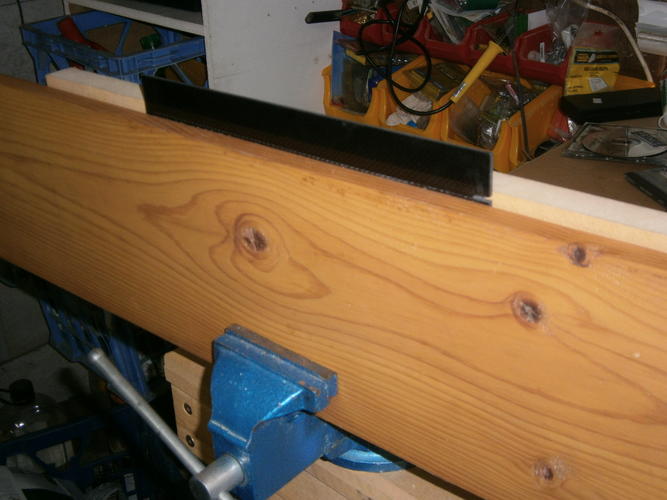
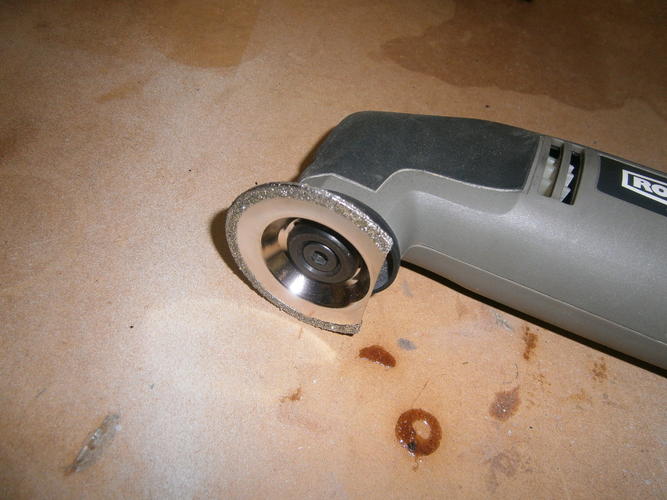
For a bit of a test, I glued them together with a piece of paper in the middle using water soluble white glue, in anticipation of later shaping, Holds very firm.
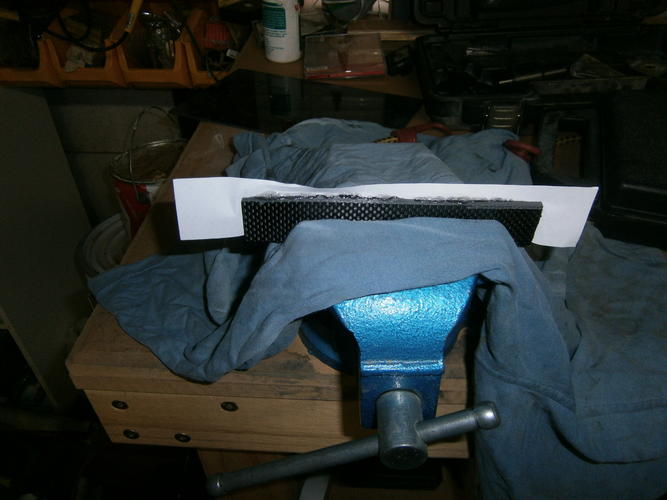
and the next day soaked for 15 minutes in a glass of water to ensure they came apart.
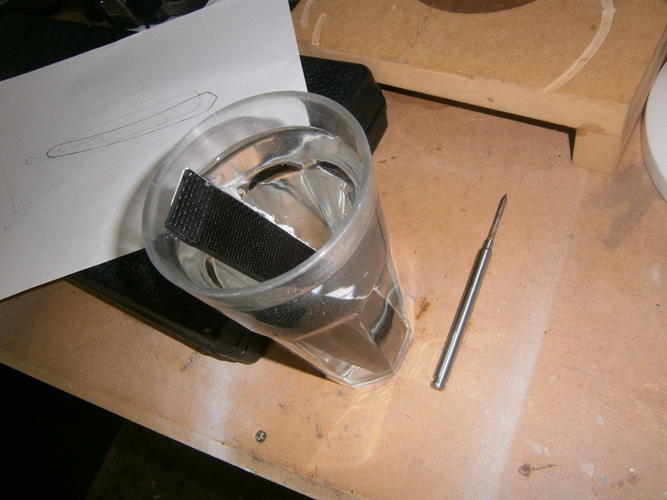
No problems there - came apart easily.
-------------------------
Snipped off the pin from the Blue Wonder razor using some aviation shears and traced out the scales, the razor and the pivot hole. I really like the style of the scales, so not going to change the shape - even though the concave curve is going to be tricky. Felt like a vandal cutting an antique like that, but it was broken anyway. Kept the bits for keepsake.
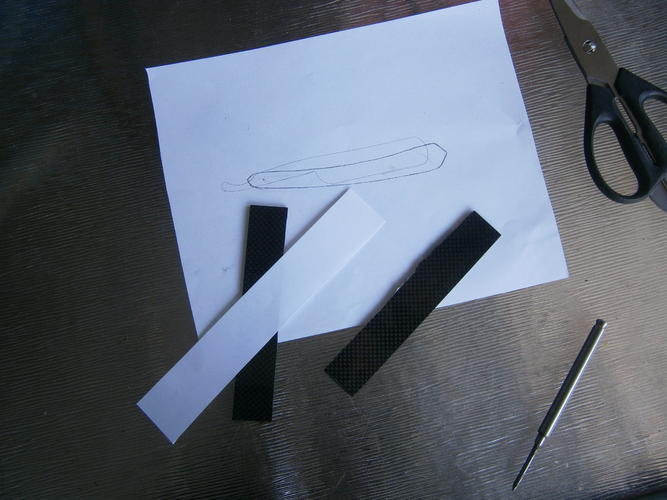
Took a few photocopies of this tracing, for reasons that will become apparent.
To be continued...


 13Likes
13Likes LinkBack URL
LinkBack URL About LinkBacks
About LinkBacks






 Reply With Quote
Reply With Quote